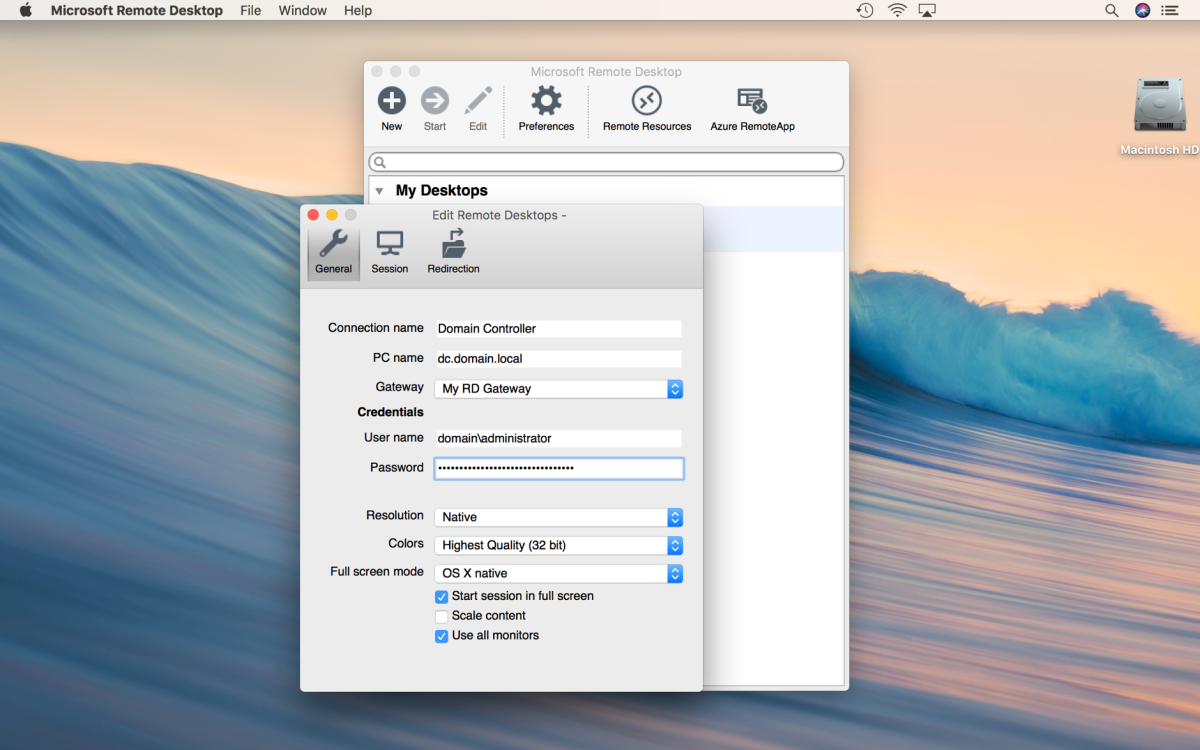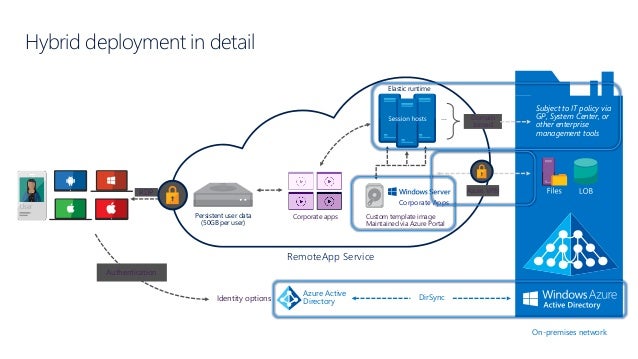Last Updated on August 12, 2020 by
In my previous blog post, I have explained how we can set up Windows Virtual Desktop (Spring 2020 Release) and publish desktops. If you didn’t read it yet, please go ahead and read it before we continue with this article as I am going to use the same system setup. You can access previous blog post using this link.
In this blog post, I am going to demonstrate how to publish applications using Windows Virtual Desktop (Spring 2020 Release).
Before we start, let’s go ahead and check how is my demo environment looks like and what I am trying to achieve.
• I have two Resource groups in place. EUSRG1 resource group is in Azure East US region and UKSRG1 resource group is in UK South Azure region.
• Resource in UKSRG1 resource group represents my on-premises infrastructure.
• I have a Windows AD server running in UKSRG1. It is syncing to Azure AD by using Azure AD Connect.
• EUSVNet1 and UKSVnet1 are connected using Azure VNet-to-VNet VPN Gateway Connection (https://www.rebeladmin.com/2019/09/step-step-guide-setup-azure-vnet-vnet-vpn-gateway-connection-powershell-guide/). This way session hosts in EUSRG1 can be added to Windows AD using the standard method.
• I have set up two windows virtual desktop session hosts (REBELSH-0 & REBELSH-1) and a workspace (REBELWP01) in EUSRG1 resource group.
Both session hosts are joined to Windows AD using the standard domain join method.
I am going to create a new application group and publish Microsoft Word and Microsoft Excel Applications.
Create Windows Virtual Desktop Application Group
Azure Portal Desktop Application. You get pretty much the full experience, including the Azure Shell: Azure Shell in the Azure Portal Desktop Application. And my other favorite feature is the search, which is exceptionally responsive: Azure Portal Desktop Application, using the Search bar. That's it, just a small tip - enjoy. Publishing Remote Desktop Services via Azure App Proxy Step by Step Daniel Cubley 5th February 2019 Azure This Blog will detail the process of publishing RDS via Azure App Proxy with Single Sign On.
Let’s go ahead and create the application group for remote apps.
1. Log in to Azure portal as Global Administrator
2. Search for Windows Virtual Desktop and click on it.
3. Then click on Application groups
4. In Application group page click on + Add
5. This will open up a new wizard. In there, first, select the resource group. According to my setup, it should be EUSRG1. Then select the Host pool. I already have a host pool setup with the required applications. The application group type should set to RemoteApp. Under the Application group name, define a name for the app group. After all settings are in place click on Next : Assignments to proceed.
6. In assignments page, click on + Add Azure AD users or user groups to assign users to the application group. With Spring 2020 Release, now you can assign permissions to Azure AD groups. In my demo setup, I have Azure AD group called “REBELADMIN App Group“. I am going to assign this new app group to it. After settings are applied, click on Next: Application
7. In the Application page, click on + Add applications.
8. It will open up a new wizard. In their select Start menu as the Application source. This will retrieve the applications available in the session host’s start menu. For custom apps, we can select File path as the application source and define the exe path. Next, using Applications option, select the application you like to publish. In my demo, I am going to publish Microsoft Word. If you need, you can change the application name by modifying value in Display name field. In the end, click on Save to publish the application.
Same way, I added Microsoft Excel application to the list. In the end, click on Next: Workspace to proceed.
9. In Workspace page, Click on Yes for Register application group option. This is to register the application group with the workspace. I already have a workspace setup. So, this new group will also register with the existing workspace. After settings are in place, click on Review + Create to complete the application group configuration process.
10. In the next window, the system will validate the settings. Once validation is completed, click on Create.
This completes the configuration process; let’s go ahead and test the remote app access.
Testing
There are many different ways to connect to Windows virtual desktop services. In this demo, I am using web client method.
1. Launch web browser and go to https://rdweb.wvd.microsoft.com/arm/webclient
2. Then I am login as a member of “REBELADMIN App Group”
Azure Remote Desktop App Free
3. Once I logged in, I can see the applications I just published.
4. I went ahead and click on Microsoft Word.
5. Then system prompt for permissions to access local resources. Click on Allow to proceed.
6. In the next window, the system asks for credentials again. I type the same login details and click on Submit.
7. Then as expected, I can see the Microsoft Word App.
Microsoft Azure Remote Desktop

This marks the end of this blog post. Hope now you have a better understanding of how to publish applications using Windows Virtual Desktop. If you have any further questions feel free to contact me on rebeladm@live.com also follow me on twitter @rebeladm to get updates about new blog posts.
Since everyone started working remotely, I've personally needed to Remote Desktop into more computers lately than ever before. More this week than in the previous decade.
I wrote recently about to How to remote desktop fullscreen RDP with just SOME of your multiple monitors which is super useful if you have, say, 3 monitors, and you only want to use 2 and 3 for Remote Desktop and reserve #1 for your local machine, email, etc.
IMHO, the Remote Desktop Connection app is woefully old and kinda Windows XP-like in its style.
There is a Windows Store Remote Desktop app at https://aka.ms/urdc and even a Remote Desktop Assistant at https://aka.ms/RDSetup that can help set up older machines (earlier than Windows 10 version 1709 (I had no idea this existed!)
The Windows Store version is nicer looking and more modern, but I can't figure out how to get it to Remote into an Azure Active Directory (AzureAD) joined computer. I don't see if it's even possible with the Windows Store app. Let me know if you know how!
So, back to the old Remote Desktop Connection app. Turns out for whatever reason, you need to save the RDP file and open it in a text editor.
Add these two lines at the end (three if you want to save your username, then include the first line there)
Note that you have to use the style .AzureADemail@domain.com
The leading .AzureAD is needed - that was the magic in front of my email for login. Then enablecredsspsupport along with authentication level 2 (settings that aren't exposed in the UI) was the final missing piece.

Add those two lines to the RDP text file and then open it with Remote Desktop Connection and you're set! Again, make sure you have the email prefix.
The Future?
Given that the client is smart enough to show an error from the remote machine that it's Azure AD enabled, IMHO this should Just Work.
More over, so should the Microsoft Store Remote Desktop client. It's beyond time for a refresh of these apps.
NOTE: Oddly there is another app called the Windows Desktop Client that does some of these things, but not others. It allows you to access machines your administrators have given you access to but doesn't allow you (a Dev or Prosumer) to connect to arbitrary machine. So it's not useful to me.
There needs to be one Ultimate Remote Windows Desktop Client that lets me connect to all flavors of Windows machines from anywhere, is smart about DPI and 4k monitors, remotes my audio optionally, and works for everything from AzureAD to old school Domains.
Between these three apps there's a Venn Diagram of functionality but there's nothing with the Union of them all. Yet.
Until then, I'm editing RDP files which is a bummer, but I'm unblocked, which is awesome.
Sponsor: Couchbase gives developers the power of SQL with the flexibility of JSON. Start using it today for free with technologies including Kubernetes, Java, .NET, JavaScript, Go, and Python.
About Scott
Scott Hanselman is a former professor, former Chief Architect in finance, now speaker, consultant, father, diabetic, and Microsoft employee. He is a failed stand-up comic, a cornrower, and a book author.
AboutNewsletter
